just a quick update on our latest bonsai workshop. This was the 3rd time Peter Warren has travelled down to Cornwall to work with me and some friends on our trees. Each trip is roughly 6 months apart and some of the regular attendants are now seeing the early works starting to pay off as their trees recieved a better underlying structure and are now turning into decent trees with promising futures.
Day one was spent here, initially working on a few of our stock azaleas as he certainly has more satsuki experience than anyone I've met and I was eager to learn as much as possible in order to maintain and improve our personal and stock trees. Once they were done it was time to have some fun with the good trees. We have a very nice Zelkova that came from Kimura in japan and I have been weighing up the short and long term plans for the tree - the tree had a UK show outing as a summer image and went down very well with the people who saw it in the flesh so to speak. Some people believe Ramification is everything when it comes to a winter image deciduous tree and I already knew what stage this tree was at having defoliated in the summer - i must admit to becoming a little obsessed with the plan of creating super dense twig ramification over the next few years before the trees next public outing at a winter show, but luckily the thoughts were short lived - Peter has a habit of making simple statements that make sense and it reconfirmed my true feelings from the heart......a good deciduous tree can become great if it is totally balanced and appears completely natural. Over ramification is fake when seen up close, the tree looks forced and false with lots of ugly multiple shoots and lumpy bits.... With this in mind he set to work studying the trees structure from inside to out, removed several branches that were spare, removed lots of multiple shoots formed from previous years prunings and wired the best branches into the spaces left where the worst ones were removed from.
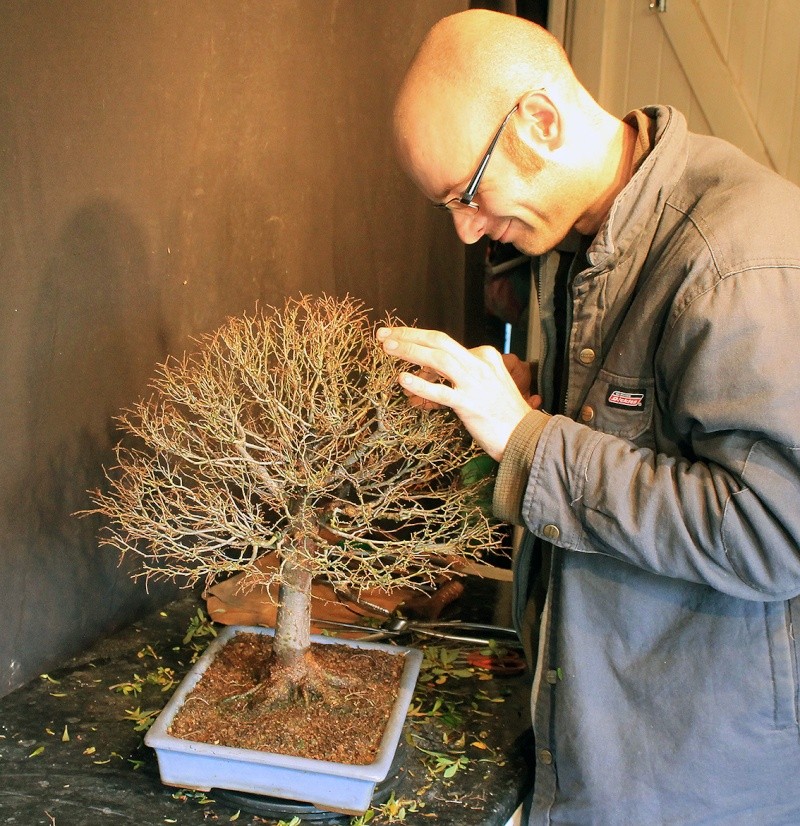
Watching and learning about the refinement stages of deciduous bonsai was brilliant - it all made total sense when you watch and listen - almost a grounding experience to remind you that a tree done properly is the only tree worth remembering for the right reasons

The next tree to come in for some work also came from the nursery of Kimura and is a product directly of his own hand - it begins with one of the rocks that are a form of natural soft stone, carved and fashioned by kimura (i think when you see the bonsai up close the rock is partly carved to take the intended tree as the match up is incredibly close - bordering on a perfect fit). The tree was selected in Japan summer 2012 and now, 18 months later it had become a lot more lush and in need of some thinning. It is a juniper planted on rock not in rock so the main roots are all in the pot. This makes for a more vigorous tree as there is more root room and since getting the tree from the QT area I had been removing the stronger growth tips virtually weekly. The original pads were now quite large and dense and i felt it made the tree look smaller than it could be so a week before I fine wired a fair bit of the tree.
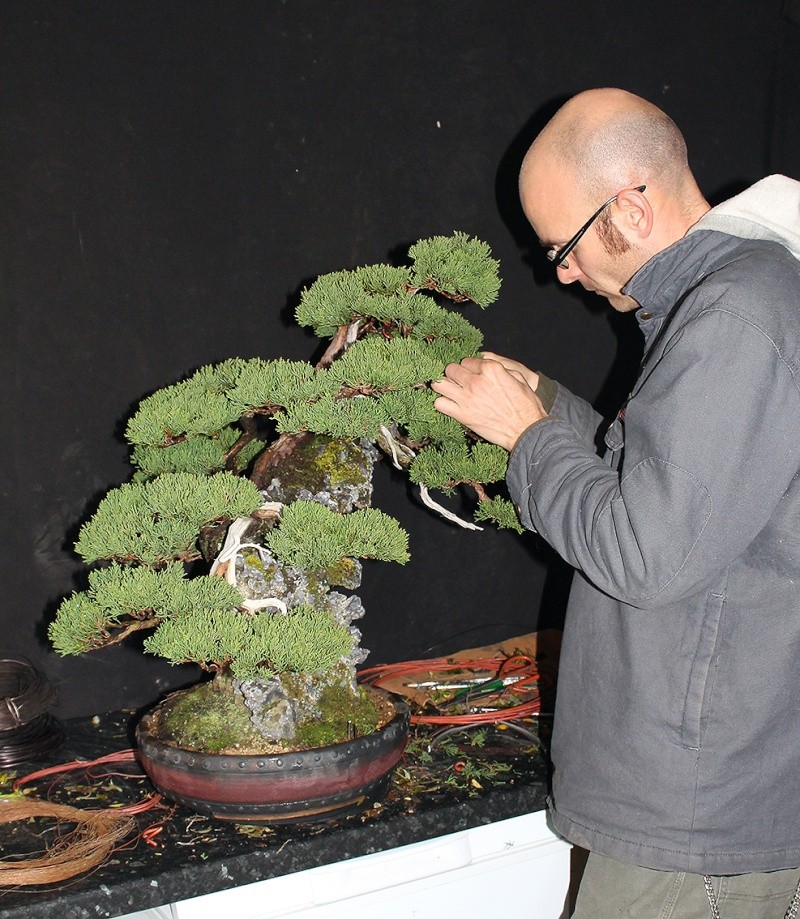
The wiring needed to be neat and sympathetic as the tree was requested and is being shown in the new year at a very professional exhibition so out came my finest copper wire and at the same time the jin and shari were seen to be quite green too, so these were scrubbed and rewashed with a very toned down lime sulphur. I like working with Peter the way we do because he asks questions, quizzes tree owners, makes us look at the material properly etc so you see what needs doing and then can work out why. Over the next few hours the tree had a bit of a restyle !! for the better too. The missing apex was created, the undecided direction was defined and the pads softened and restructured into more, smaller, interesting forms. This refining session was a joy to be part of as it showed how a tree ready to be styled for show looks when done, rather than a tree 5 years from ready being pushed too soon
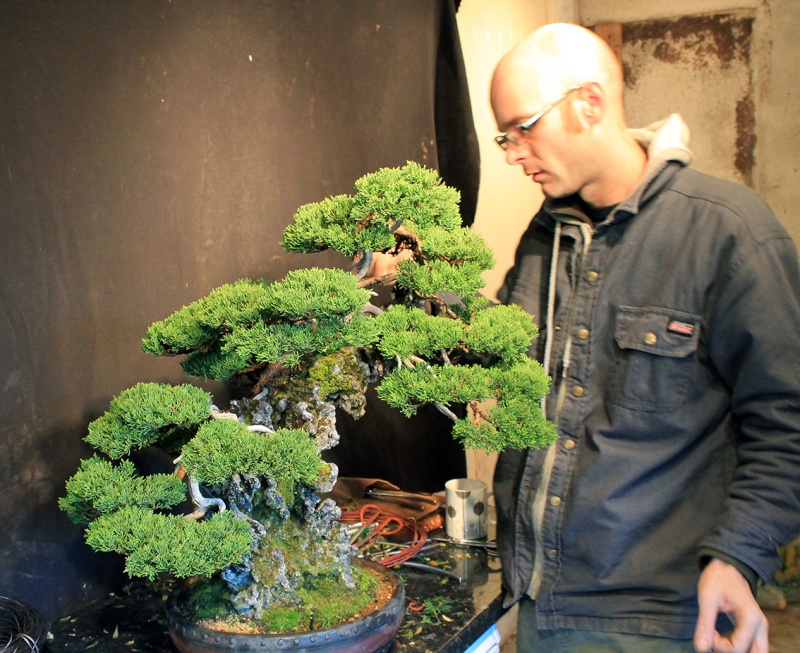
the 'after pic'? not yet, after the show maybe
Our final one to one tree was a Peter Adams styled pine in my collection that was bursting with health but was also too vigorous. I felt it was at the limit of width, density, 'lushness' etc so it was pruned back but done while maintaining shape as this was another tree that had reached mature show readiness. Here is a before pic, my tribute to an early UK bonsai pioneer
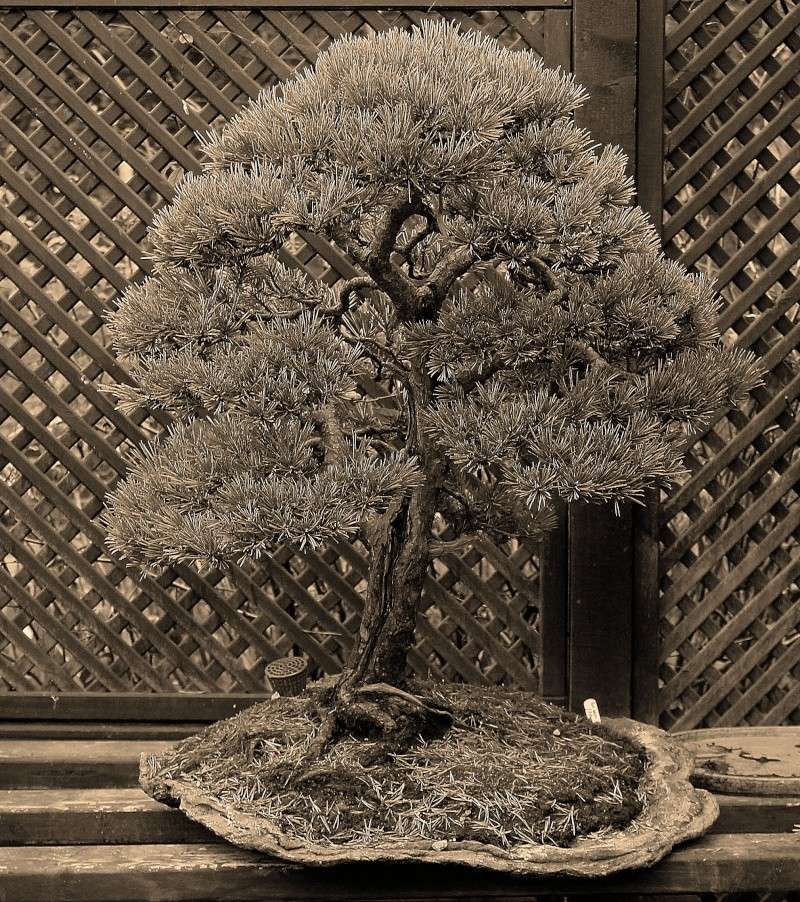
after pic will wait as the tree is due to be totally unwired, repotted, given a relaxed summer then wired back up in Autumn 2014. ....Patience again is the key to everything - the biggest mistake in bonsai is keeping every tree you own looking manicured all the time.
Day two was a small group open workshop at the bonsai@16 unit. Four attendants arrived bright and early with cars full of material for a great day of pruning, wiring, carving, assessing, wiring and styling. These days are great as so much can be learnt - even if you just bring pines it it better to listen when the tree being assessed is a juniper or other as you will take so much away from the day to then apply to the rest of your collection. We had scotts pine, black pine, white pine, juniper, larch, redwood, cedar so lots of variety and lots of information flow.
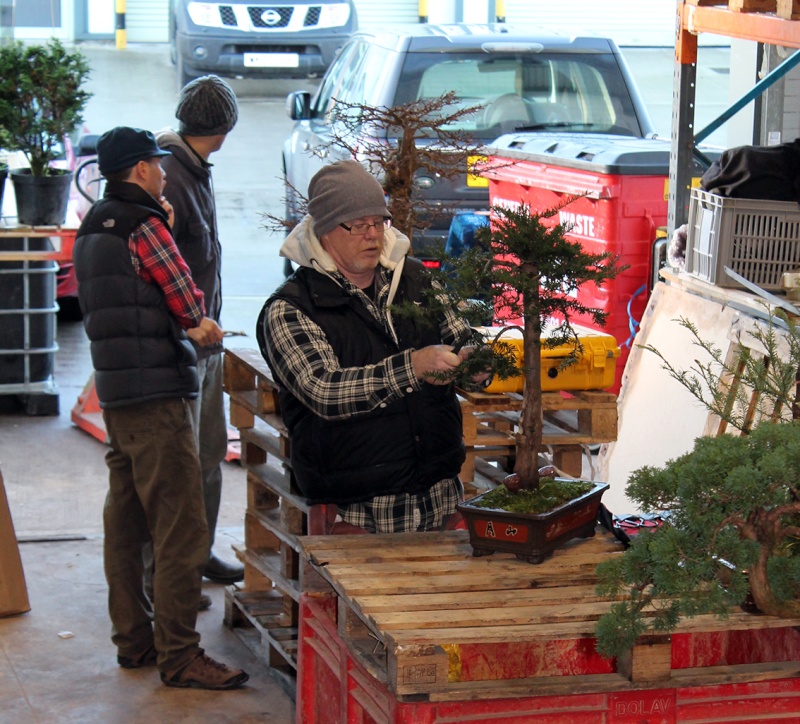
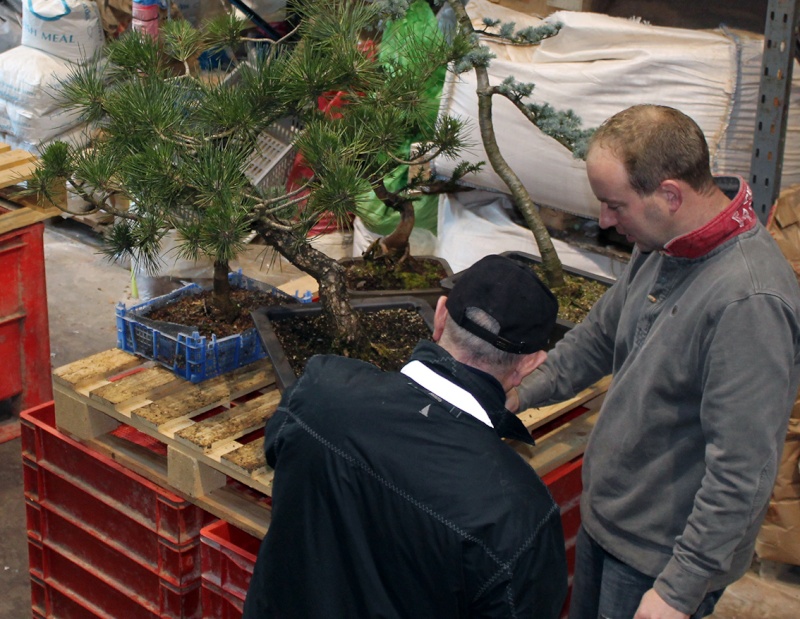
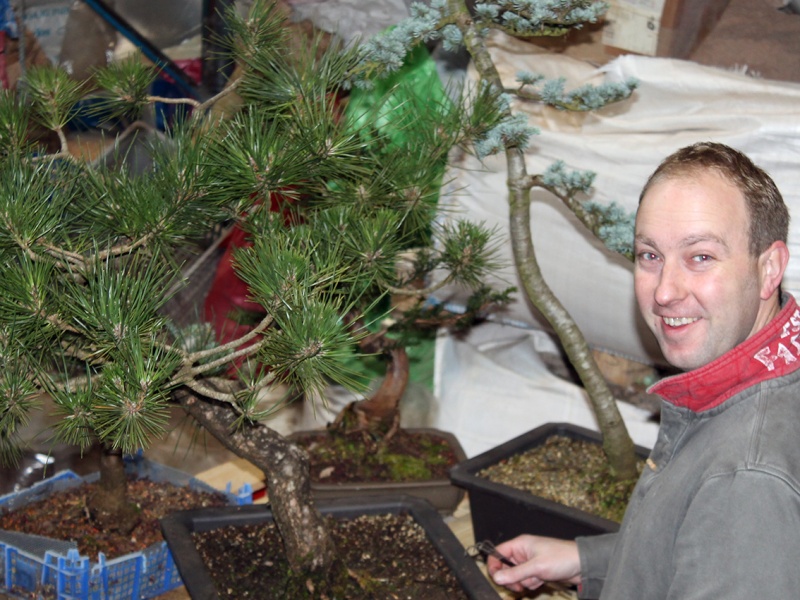
Thanks to all the guys for collectively traveling a lot of miles for the day, hopefully you enjoyed it as much as i did being the assistant
Day three:
We travelled to a friend of mine for a one to one day assessing, styling and refining some of his mature bonsai collection. In contrast to the day before it was deciduous porn - beech, hornbeam, hawthorn, metasequoia, acer.....and a juniper ! lol.
Many of these trees were superb material ready to be given the point in the right direction to remove bits that were holding the trees ultimate quality back, and with lots of directional pruning they all have a planned structure to match their trunks and maturity. The owner wanted to move his best trees towards the standard needed for the best shows we have available to us and I think we are well on the way to that goal.
I was wiring assistant most of the day so not many pics !
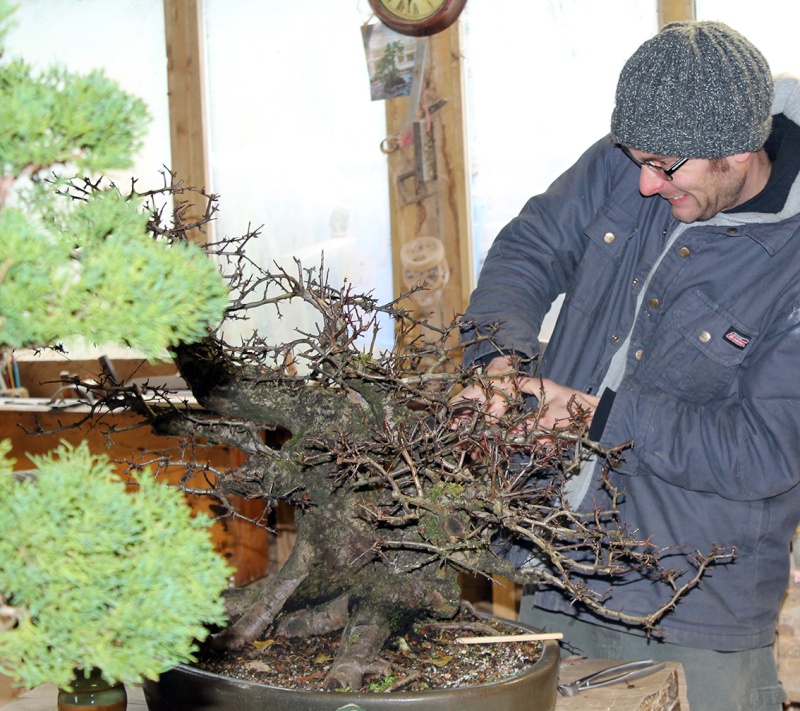
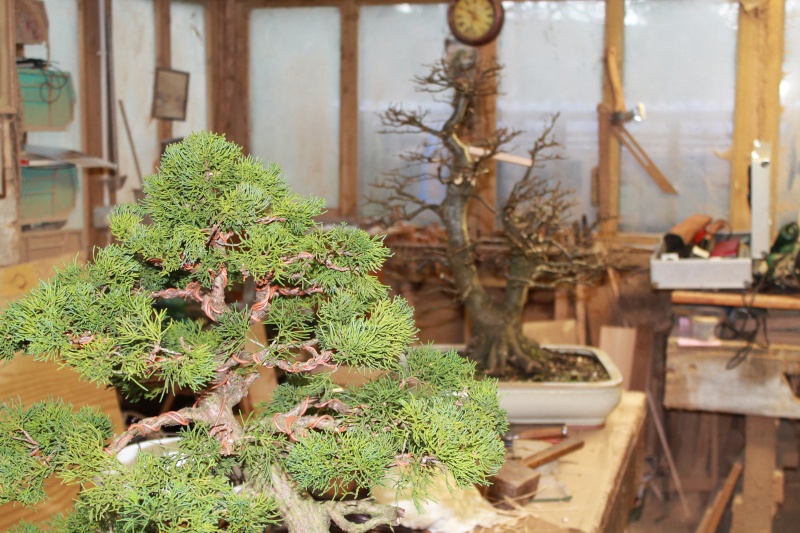
"this wood is bloody hard"
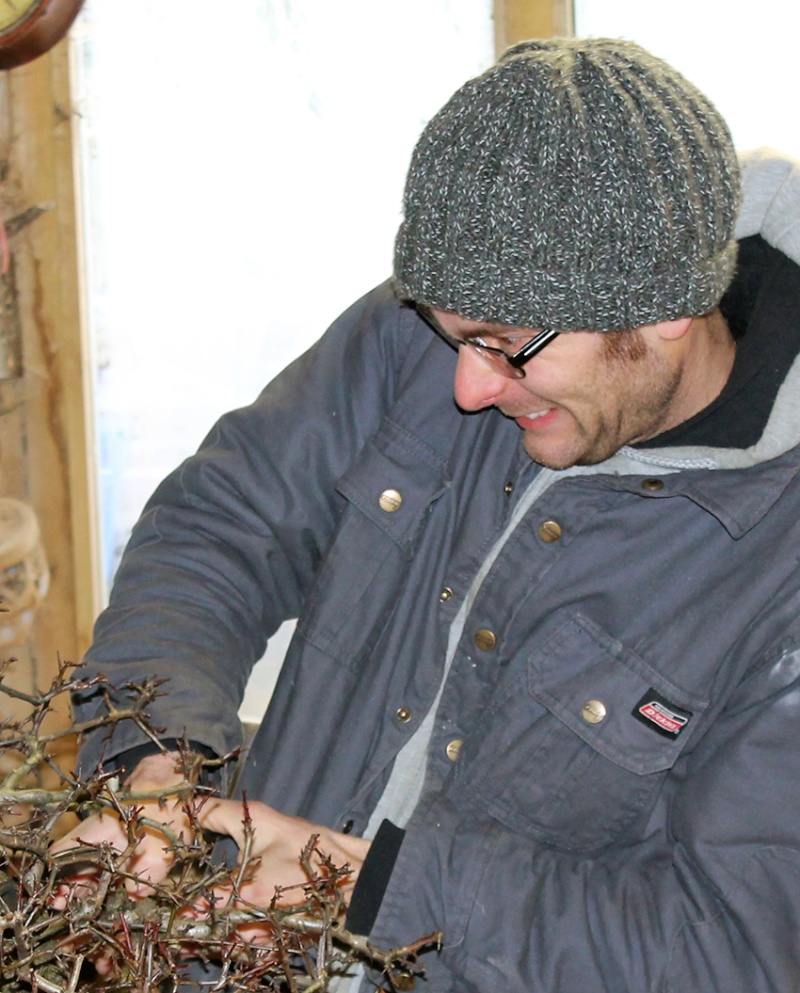
Thats it for another few months......send me a message if you fancy coming to a summer one
cheers Marcus



.jpg)

.jpg)
.jpg)
.jpg)
.jpg)
.jpg)











.jpg)
.jpg)
.jpg)

.jpg)
.jpg)
.JPG)



.jpg)




.jpg)
.jpg)
.jpg)
.jpg)
.jpg)

